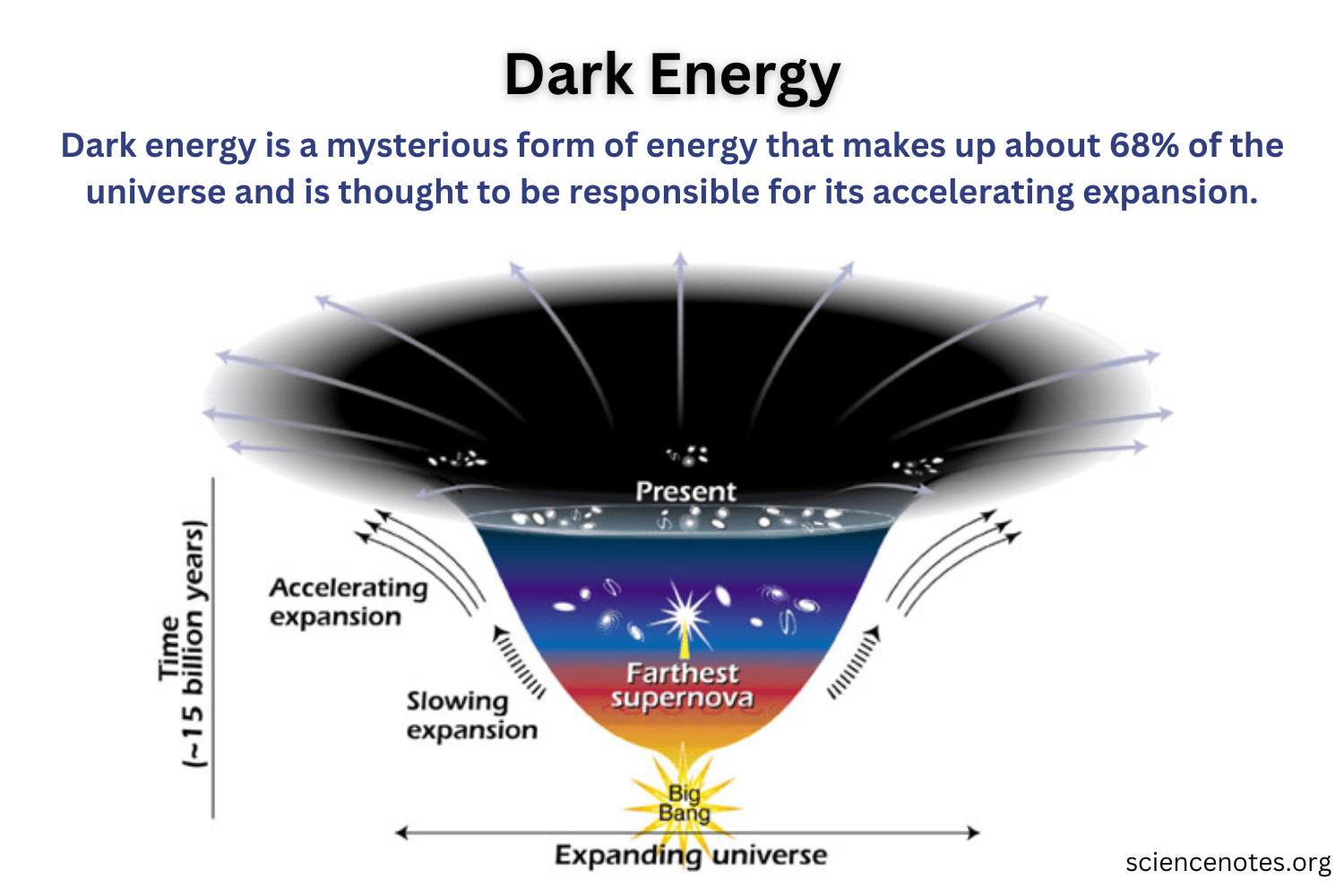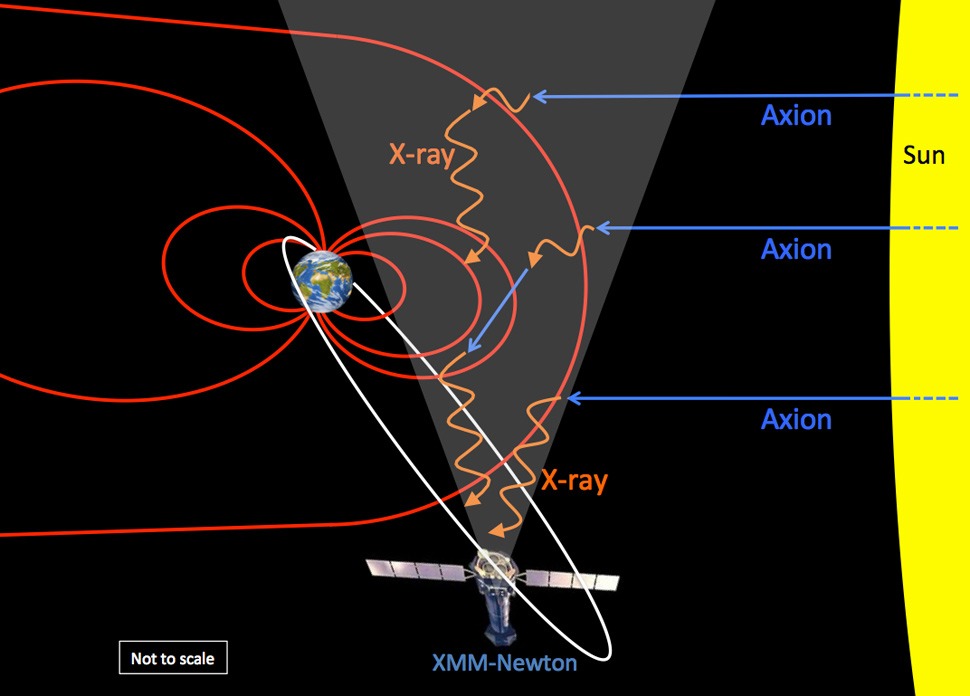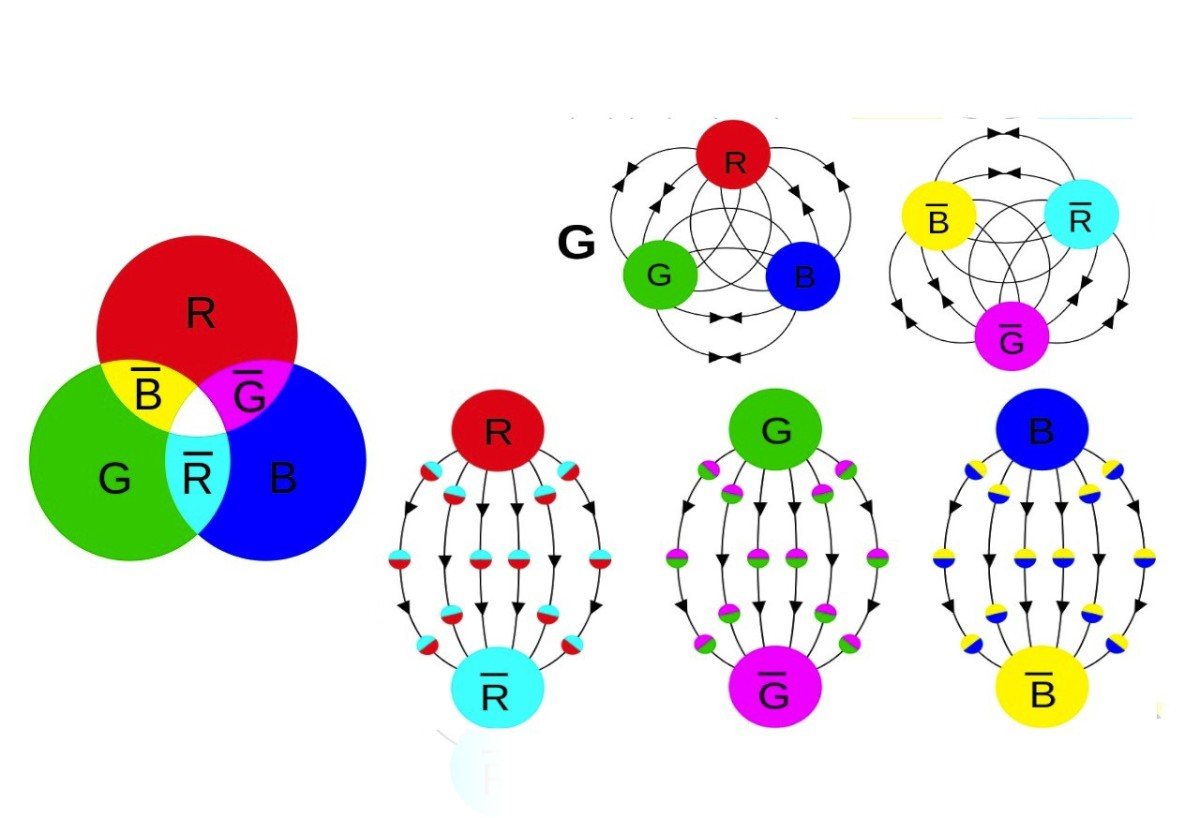Dark energy has emerged as one of the most enigmatic phenomena in modern cosmology, fundamentally shaping our understanding of the universe’s expansion. This mysterious force is believed to be driving the accelerating growth of the universe, prompting scientists to question long-held beliefs about the cosmological model. Recent breakthroughs from the Dark Energy Spectroscopic Instrument (DESI) collaboration reveal potential changes in dark energy’s influence over time, suggesting a major shift in our perception of cosmic forces. By analyzing the distribution of dark matter and observing Baryon Acoustic Oscillations, researchers gather vital data that could redefine our grasp of the universe’s fate. As investigations into dark energy intensify, we stand on the brink of groundbreaking discoveries that could reshape our place in the cosmos.
The concept of dark energy, often referred to as the driving force behind cosmic acceleration, plays a pivotal role in shaping our understanding of the vast universe. This phenomenon, sometimes described in terms of gravitational repulsion, appears to influence the relationship between cosmic matter and the overall expansion rate of the universe. Insightful research stemming from global initiatives, such as innovative telescopic surveys, has led to enhanced mapping of celestial formations and dark matter interactions, shedding light on this elusive energy. Such collaborative efforts are crucial in updating our cosmological models, refining our grasp of underlying principles governing universal expansion and the interplay of galaxies. As new evidence surfaces, the dialogue continues, inviting fresh perspectives on the mechanics of our universe.
Understanding Dark Energy and Its Role in Universe Expansion
Dark energy plays a pivotal role in the expansion of the universe, a phenomenon that has intrigued scientists since the Big Bang. It is the mysterious force believed to be responsible for the accelerated expansion we observe today. This force counters the gravitational attraction of matter, suggesting that as the universe expands, dark energy’s influence may grow. Described initially as a cosmological constant, new findings from the Dark Energy Spectroscopic Instrument (DESI) collaboration indicate that dark energy might be changing over time, which poses profound implications on our cosmological models.
The implications of these changes challenge existing notions about the universe’s fate and structure. Cosmologists traditionally viewed dark energy as a stable and constant entity, yet the latest analyses of data from DESI suggest it could be weakening. By tracking the distribution of galaxies over an expansive 3D cosmic map, scientists have gathered insights on how dark energy has influenced the universe’s acceleration for over 11 billion years. This ongoing research highlights the importance of monitoring these cosmic factors to develop a more nuanced understanding of universal phenomena.
The DESI Collaboration: A Global Effort in Cosmological Research
The DESI collaboration represents a monumental international effort involving over 900 researchers from more than 70 institutions, coordinated by the U.S. Department of Energy’s Berkeley Lab. This initiative seeks to explore the roles of dark energy and dark matter in shaping the universe. Its primary focus is to map the distribution of galaxies and quasars, which provides essential data for understanding both cosmic evolution and the dynamics of dark energy. As part of its findings, researchers released data that reflects diverse cosmic phenomena, paving the way for future studies in dark matter and baryon acoustic oscillations.
The contributions of teams like those from the Center for Astrophysics at Harvard are vital in analyzing and interpreting vast amounts of information gathered by DESI. Researchers are not only refining our understanding of dark energy but also investigating critical elements of galaxy formation and evolution. The integration of varied datasets into a cohesive framework allows scientists to measure cosmic distances and calibrate models against observable phenomena. As DESI continues to gather data, it reinforces its commitment to advancing our grasp of the universe’s architecture.
Cosmological Models: Adapting to New Discoveries
As findings regarding dark energy evolve, cosmological models may need recalibrating to accommodate new insights from ongoing research like that of the DESI collaboration. Traditionally anchored by the cosmological constant, models of the universe must now take into account the potential variability of dark energy. The implications are significant; if dark energy weakens, the expansion of the universe could slow down, ultimately changing the ultimate fate of all cosmic structures. This revelation encourages researchers to explore alternative explanations and frameworks to adequately describe the universe’s behavior.
Adjusting cosmological models is no easy task, requiring extensive computational analysis and theoretical re-evaluation. Through methods such as simulations and algorithm jumps contributed by teams like Harvard’s, researchers aim to refine their existing frameworks. These efforts transcend mere academic curiosity, as a more accurate understanding of dark energy will influence the greater fabric of astrophysical sciences. The merging of observational data with advanced theoretical frameworks thus becomes not only essential but an exciting frontier in uncovering how our universe operates.
Baryon Acoustic Oscillations and the Cosmic Ruler
Baryon Acoustic Oscillations (BAOs) refer to the periodic fluctuations in density of visible baryonic matter in the universe. These oscillations serve as a cosmic ruler—allowing astronomers to measure large cosmic distances with precision. CEnergy observatories, such as the DESI, harness the power of BAOs in analyzing how matter is distributed across the universe. By understanding these oscillations, researchers can glean insights into dark energy’s influence on universal expansion and refinement of cosmological models.
By mapping the imprint of BAOs in the distribution of galaxies, scientists can trace cosmic history. These imprints illustrate how dark energy and matter interact across vast scales. As DESI continues to compile data on billions of galaxies and quasars, optimally leveraging BAOs will illuminate the relation between cosmic expansion and the nature of dark energy. The marriage of observational data with theoretical predictions offers a powerful tool for cosmologists seeking to understand the universe’s complex and dynamic evolution.
The Future of Astrophysical Research: New Insights from DESI
With the release of its first data set, DESI sets the stage for a new era of astrophysical research. The vast repository of information on millions of celestial bodies opens avenues for researchers to explore various facets of cosmic science, including galaxy evolution and the structure of the Milky Way. This data empowers scientists to work collaboratively, fostering insight into longstanding questions about dark matter and dark energy while promoting educational outreach.
The continued operations of the DESI survey every clear night mean that astronomers will hone their understanding of the universe’s underlying physics. This endeavor not only extends our cosmic maps but also enhances public engagement with astronomy. As findings emerge from such significant collaborations, they hint at the potential for groundbreaking shifts in our understanding of stellar and galactic phenomena, reaffirming the vital role of collaborative research in advancing scientific discovery.
Exploring Dark Matter Within the Context of Dark Energy
Dark matter remains one of the most enigmatic components of our universe, intricately linked to the study of dark energy. While dark energy is driving the universe’s accelerated expansion, dark matter constitutes the unseen mass that helps regulate gravitational forces. Efforts like those conducted through the DESI collaboration play a crucial role in delineating the relationship between these two cosmic phenomena. By examining matter distribution, scientists can glean important insights into dark matter’s structure and behavior within various cosmological models.
The connection between dark matter and dark energy might unveil different dynamics influencing cosmic evolution over time. Researchers analyze how dark matter interacts with visible matter, contributing to the overall gravitational landscape of the universe. Through ongoing projects and analyses, it is critical to foster deeper knowledge of how these forces coalesce to shape the evolving fabric of our cosmos, thus enriching our understanding of fundamental astrophysical processes.
Cosmic Maps: Mapping the Universe with DESI Data
Cosmic mapping represents one of the most profound advancements in astrophysics, allowing researchers to visualize the universe in three dimensions. The Dark Energy Spectroscopic Instrument’s contributions to these cosmic maps enable astronomers to analyze the structures and patterns within the universe more effectively. By utilizing data derived from the mapping of over 14 million galaxies, researchers can discern the distribution and clustering influences of both dark matter and dark energy.
As cosmic maps grow increasingly detailed, they serve critical functions ranging from studying the universe’s expansion rate to identifying galaxy formations and their interactions within cosmic webs. These visualizations, furnished by DESI’s advanced techniques, enhance the overall understanding of not only cosmic structures but also the precise measurements of distances that correlate with cosmological theories. Thus, the ongoing elaboration of these maps heralds significant progress in establishing a coherent narrative surrounding the dynamic nature of our universe.
Implications of DESI’s Findings for Future Cosmological Theories
The findings from the DESI collaboration usher in a new chapter for cosmological theories, suggesting that existing paradigms regarding dark energy may need significant revisions. As evidence mounts that dark energy might not remain constant, this realization compels researchers to re-examine the foundational elements of our understanding of the universe. Ambiguities surrounding dark energy’s behavior could enrich or redefine theories that have long guided cosmology, opening doors to innovative perspectives and further inquiry.
Moving forward, cosmologists are urged to integrate the DESI findings into broader discussions on the universe’s fate. Collaborations between astrophysicists, theoretical physicists, and mathematicians will be crucial in developing models that adequately reflect these new insights. Therefore, the evolution of research surrounding dark energy and dark matter represents not merely a pursuit of knowledge but a continuous adaptation of the cosmic narrative we have come to recognize as our universe.
The Role of Public Engagement in Astrophysical Discoveries
Public outreach initiatives underscore the significance of communicating scientific findings to a global audience, as emphasized in DESI’s commitment to educational efforts. Engaging the public fosters a deeper understanding of complex concepts such as dark energy, dark matter, and universal expansion. By making data accessible and comprehensible, researchers invite curiosity and encourage future generations to partake in scientific pursuits, bridging the gap between complex astrophysical research and public interest.
Furthermore, the visibility of projects like DESI engenders collaborative learning experiences that transcend academic environments. Universities, research institutions, and public observatories can work together to disseminate knowledge while inspiring a culture of inquiry and exploration within communities. In essence, illuminating the wonders of the universe through public engagement not only enhances scientific literacy but also lays the groundwork for innovative thought and discovery in future astrophysical endeavors.
Frequently Asked Questions
What is dark energy and how does it relate to the universe expansion?
Dark energy is a mysterious force thought to be responsible for the accelerated expansion of the universe. It is believed to make up about 68% of the universe’s total energy content, acting in opposition to gravity and driving galaxies apart. Understanding dark energy is crucial for studying the universe’s fate and how it expands over time.
How does the DESI collaboration help us understand dark energy?
The Dark Energy Spectroscopic Instrument (DESI) collaboration is pivotal in investigating dark energy by mapping the distribution of galaxies across the universe. It provides critical data on how dark energy influences cosmic expansion, utilizing techniques such as observing Baryon Acoustic Oscillations to create a 3D map of the universe.
Could dark energy be changing, and what implications does this have for cosmological models?
Recent analyses suggest that dark energy might be weakening over time, which could challenge current cosmological models that treat it as a constant. This discovery, facilitated by DESI data, implies that scientists may need to revisit their understanding of dark energy’s role in the expansion of the universe and potentially update existing theories.
What role do Baryon Acoustic Oscillations play in measuring dark energy?
Baryon Acoustic Oscillations (BAOs) are patterns in the distribution of galaxies that act as a ‘standard ruler’ for measuring cosmic distances. By studying these oscillations, researchers can gauge the changes in dark energy’s strength over time, providing insights into how it affects the universe’s expansion.
How many researchers are involved in the DESI collaboration and what are their contributions toward understanding dark energy?
The DESI collaboration encompasses over 900 researchers from more than 70 institutions worldwide. Their contributions range from developing algorithms and simulations to analyzing data from galaxies, all of which are essential for enhancing our understanding of dark energy and its impact on the universe’s expansion.
What datasets has the DESI collaboration made available to the public concerning dark energy?
The DESI collaboration has released Data Release 1, which includes detailed information on millions of galaxies and quasars. This dataset allows researchers and the public to explore the effects of dark energy on cosmic structures and supports diverse astrophysical studies.
How does dark matter relate to dark energy in the context of the universe’s expansion?
While dark energy is responsible for the accelerated expansion of the universe, dark matter is a different entity that adds to the total mass and gravitational pull within galaxies. Together, they balance gravitational forces and contribute to the overall dynamics of the cosmos, making their interaction critical in understanding the universe’s fate.
What are the long-term goals of the DESI survey regarding dark energy and cosmic exploration?
The DESI survey aims to extend our understanding of dark energy through ongoing observations, improving our grasp of cosmic expansion and the universe’s structure. By continuously mapping the sky, DESI seeks to answer fundamental questions about the universe’s fate and the underlying physics governing it.
| Key Points | Details |
|---|---|
| Collaboration | International Dark Energy Spectroscopic Instrument (DESI) working with over 900 researchers from 70+ institutions. |
| Main Finding | Dark energy may be weakening over time, suggesting an update to the standard model of the universe. |
| Research Importance | Findings were based on 3 years of data analyzing dark energy’s impact over the past 11 billion years. |
| Baryon Acoustic Oscillations | Patterns in matter distribution serve as a standard ruler for measuring dark energy’s influence on expansion. |
| Roles of CfA Researchers | Key figures include Daniel Eisenstein in co-development, Cristhian Garcia Quintero in interpretations, and Michael Rashkovetskyi in calculations. |
| Public Engagement | DESI Data Release 1 is now publicly accessible, providing detailed information for further astrophysical research. |
Summary
Dark energy is a fundamental aspect of our understanding of the universe, and recent findings from the DESI collaboration indicate that it may be changing in unexpected ways over time. This challenges existing cosmological models and underscores the importance of continued astrophysical research. The ongoing studies provided by DESI and the involvement of prominent researchers promise to enhance our comprehension of dark energy’s role and the overall dynamics of the cosmos.



